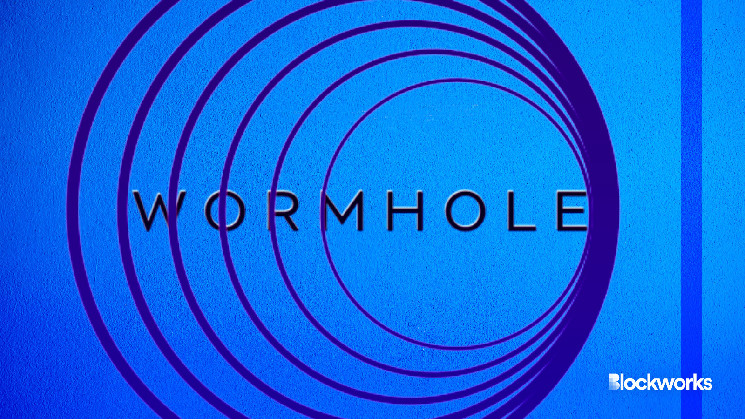Cross-chain messaging protocols have become increasingly popular over the past year.
Wormhole recently surpassed 1 billion cross-chain messages since its launch in 2021 and has transferred a total volume of over $39 billion through its token bridge.
Similarly, cross-chain transactions at and active addresses on Axelar have increased by 478% and 430% respectively over the past year.
The main method of transferring information and assets between different blockchain networks today is via blockchain bridges. However, bridges are notoriously difficult to decentralize.
Blockchain bridges often use the lock-and-mint or burn-and-mint approach to transfer value across different blockchains.
This requires a user to lock up their own asset on chain A and exchange it for a synthetic version of that same asset before transferring it from chain A to chain B. Once he transfers the asset, he has to pay again to change that synthetic asset back to the original asset on chain B.
Although this method would guarantee instant finality in the destination chain, the process is quite tedious. It also comes with its own set of security risks, such as vulnerability to malicious attacks.
Wormhole itself was subject to one of these attacks in 2022, with the protocol losing over $320 million worth of ether, making it one of the largest DeFi exploits to date.
Read more: Most bridges ‘absolutely not safe’: co-founder of Chainlink
Custodial bridges have hoped to avoid this by introducing a centralized entity to oversee the assets and protect the bridge itself. However, this in turn means that users must place their trust in a single entity, which goes against the ethos of decentralization.
Another way bridges can transfer assets is by having a unified liquidity pool. This means that multiple chains will share the same liquidity pool and improve capital efficiency between the connected blockchains.
This solution would only work if all chains could meet liquidity requests. In the event that multiple trades hope to withdraw from the same pool, there must be ways to ensure that there is enough liquidity in the pool to meet all requests. Failure to do so can lead to greater complications. This type of bridging also does not guarantee immediate finality.
The latest shift towards focusing on cross-chain messaging solutions is improving the existing bridging infrastructure.
It’s important to note that cross-chain messaging protocols are a low-level infrastructure, similar to blockchains themselves, Robinson Burkey, the CCO at the Wormhole Foundation, told Blockworks.
“These messaging protocols provide the basic language and framework to securely transmit data between two systems that are incompatible. Once you have this foundational technology in place, you can build what people often call token bridges on top of the messaging protocol,” Burkey said.
One popular cross-chain messaging solution that has attracted attention is Axelar’s General Message Passing (GMP).
GMP acts almost as a translator for the different networks that would otherwise not be able to understand each other. This is achieved through self-executing smart contracts that can use different methods to validate and authenticate transactions in chain A before they reach chain B.
Galen Moore, the global communications lead at Interop Labs, the original developer of the Axelar network, told Blockworks that GMP simplifies the blockchain bridging process by allowing developers in one chain to call functions in another chain.
“GMP allows applications to bridge assets, in addition to instructions for an application on another blockchain,” Moore said. “If I build an app on a new blockchain and use a simple bridge, I have to say to my users, “Bridge your ETH to my blockchain here, then use this DEX to buy some of my gas tokens there, and then come back to my app and on board.” GMP can activate all these steps automatically; to the user it looks like a single transaction.”
While GMP is an improvement over bridges when it comes to asset transfers, this too is still in its infancy.
“GMP is an improvement, but it’s still a lot of work to create a unified user experience spanning multiple blockchains,” Moore said.
He notes that the next phase of evolution for Axelar will be enabling programmable interoperability, which has the potential to leave bridges behind altogether.
“When the interoperability layer itself is a virtual machine like Ethereum, it can automate complex tasks – such as minting a token on multiple blockchains at once, and managing supply and custom features across them,” Moore said.
Moore notes that the interchain token service (ITS) launched last week on the Axelar mainnet hopes to provide this exact type of automation.
“The vision behind Axelar is a Web3 where developers can freely compose and connect to functions and networks that exist across many chains within Web3 and beyond. This is something you can’t do at all in Web2. The long-term vision is an Internet that supports a different kind of online network,” he said.
Wormhole is also working to improve the interoperability experience. It recently unveiled its ZK roadmap to facilitate multichain communications to improve trust assumptions about the Wormhole protocol.
“In our approach, ZK will serve as a cornerstone for decentralization and ensuring message authentication. Specifically, in an interoperability protocol such as Wormhole, ZK will enable the prover to authenticate the full state of a blockchain, such as Ethereum, to verify the validity of messages sent from the source blockchain,” Burkey said.
He adds: “The ZK roadmap will become clearer in the coming months. But our strategy involves adding and collaborating new cryptography experts to our team, upcoming light client deployments, and a strategic partnership with a hardware vendor to accelerate some light client deployments.”

